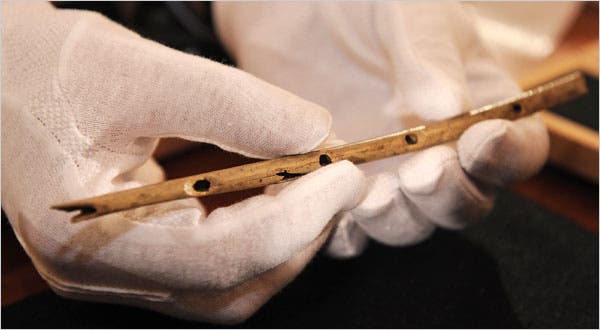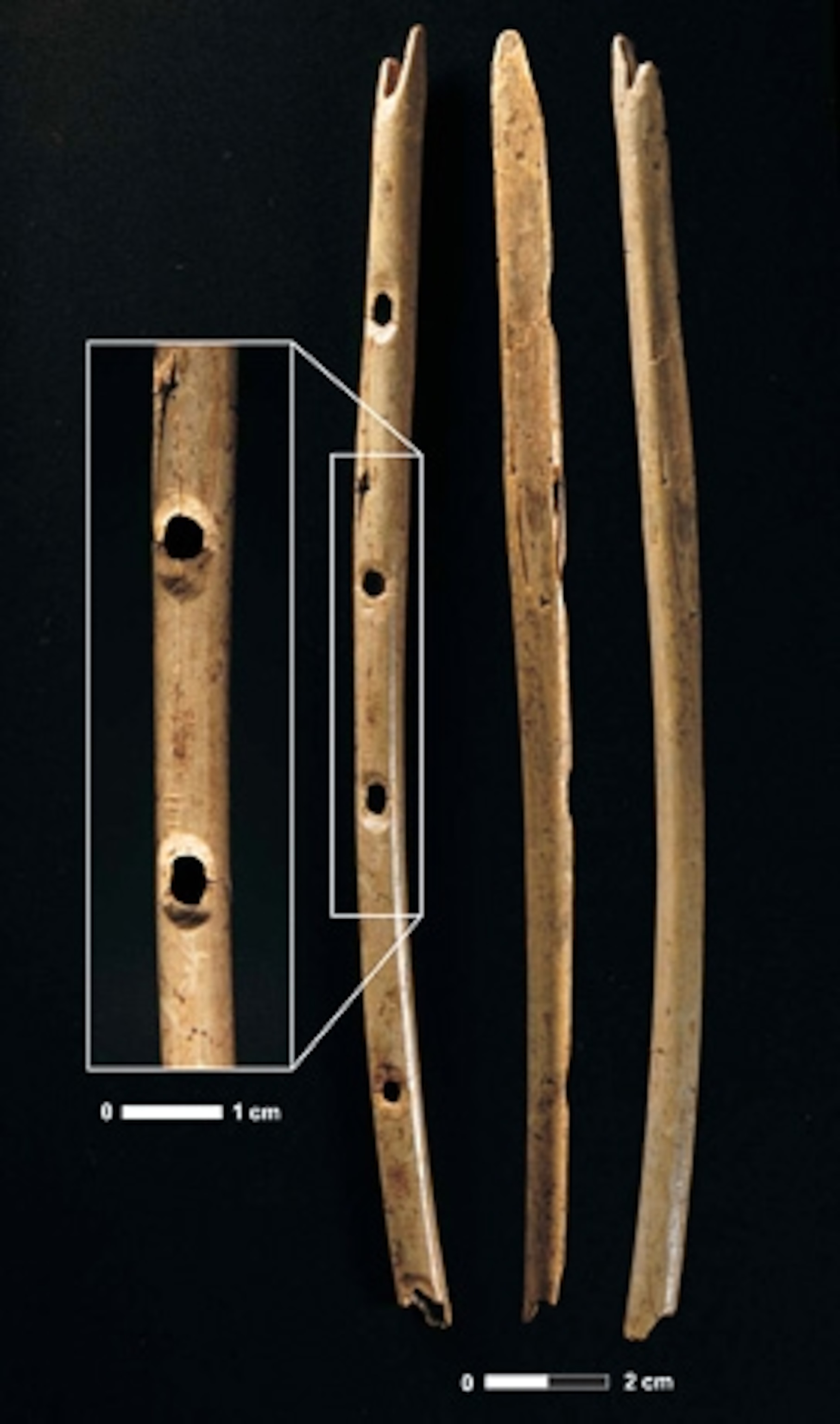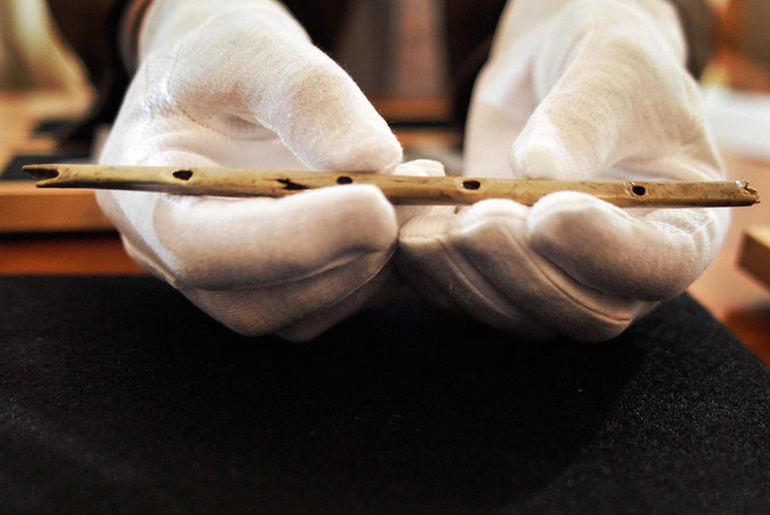In 2008, archaeologists unearthed a groundbreaking discovery at Hohle Fels Cave in Germany—a nearly complete bone flute, believed to be over 35,000 years old. Carved from the bone of a griffon vulture, this flute is one of the oldest known musical instruments ever discovered. Measuring 21.8 cm in length and featuring five finger holes, it provides an extraordinary glimpse into the advanced craftsmanship and cultural life of our Upper Paleolithic ancestors.
A Remarkable Artifact of Prehistoric Creativity
The flute’s design highlights the extraordinary skill of prehistoric humans in crafting tools not just for survival, but for cultural and artistic expression. The bone flute demonstrates a deep understanding of sound production and design, showcasing a level of sophistication that challenges previous assumptions about the capabilities of early human societies. The flute’s shape and arrangement of finger holes suggest that it was intended for melodic play, capable of producing a range of notes, which implies that music was not just incidental but a conscious part of early human culture.

Artifacts that Reveal a Rich Social and Cultural Life
Found alongside the flute were other significant artifacts, including stone tools, animal bones, and a female figurine. These discoveries suggest that music may have had a central role in early human communities, perhaps linked to rituals, social bonding, or spiritual practices. The presence of symbolic items like the figurine suggests that early humans may have used music as a form of communication or a way to convey meaning beyond the purely functional.

The flute’s discovery in conjunction with these artifacts is significant because it indicates that art and culture were deeply interwoven into daily life. Music may have been used in ceremonies, gatherings, or rites of passage, further enriching the social fabric of these early societies. This challenges the traditional view that prehistoric people were solely focused on survival and suggests they had the capacity for complex emotional and spiritual expression.
Rewriting Our Understanding of Prehistoric Human Expression
The Hohle Fels Cave flute redefines our understanding of Upper Paleolithic cultures. It serves as evidence that, far from being isolated from creativity, early humans were actively engaged in forms of expression that connected them to their environment and to each other. The flute is a functional and artistic object, blurring the lines between practicality and aesthetic pleasure. It shows that early human societies were not only surviving but thriving with intricate cultural practices.

This discovery has profound implications for our understanding of human evolution. It suggests that the development of music, art, and culture may have occurred much earlier than previously thought, and these cultural expressions could have shaped the development of human identity. The flute, as a functional object, is also a poignant symbol of early human connection—both to each other and to the world around them.
Conclusion: A Glimpse Into the Emotional and Spiritual Lives of Our Ancestors
The Hohle Fels Cave flute is more than just an ancient instrument; it is a powerful reminder that early humans were not only concerned with survival but also engaged in creative and emotional expression. The existence of such an artifact challenges preconceived notions of prehistoric life and opens a window into the emotional, spiritual, and social lives of our distant ancestors. Through discoveries like this, we gain a deeper appreciation for the complex and rich cultural lives of early humans, underscoring the importance of music as a timeless form of connection and expression.

